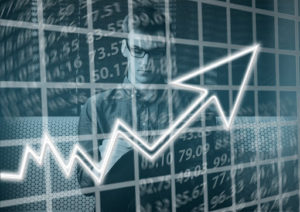What is one personal finance formula that you live by to help maintain expenses and create wealth?
To help you maintain expense and create wealth, we asked small business owners and professionals this question for their insights. From developing multiple streams of income to living beneath your means and giving back, there are several personal finance formulas that you can use to maintain your expenses and generate wealth.
Here are eleven best personal finance formulas to live by:
- Develop Multiple Streams of Income
- Set a Budget and Stick To It
- Make and Save More Than You Spend
- Seek Out the Best Deals
- Overestimate Your Spending
- Value and Invest in Yourself
- Account For Every Dollar With Zero-Based Budgeting
- Track Your Spending Monthly
- Deposit Any Extra Cash to Savings
- Set Clear Expectations With the 30/50/20 Rule
- Live Beneath Your Means and Give Back
Develop Multiple Streams of Income
You need to develop multiple streams of income, if you can. Just trying to get wealthy from one source of income is not enough to build the sort of wealth you’re imagining for yourself. Starting with the income stream you have now, add to it. Invest, if you can, as dividends from the right stocks or mutual funds can be another income stream. In general, the more income streams you have, the greater your ability to create wealth. — Carey Wilbur, Charter Capital
Set a Budget and Stick to it
Setting a budget and sticking to it is a tried and true personal finance formula that works for anyone of any age, in any business. Fiscal responsibility is never overrated. Knowing how much you have coming in and going out, how much you can afford to spend and how much would be too much, can prevent you from making costly decisions. This is one of the key foundations of creating and maintaining wealth. — Randall Smalley, Cruise America
Make and Save more than you Spend
I live by the formula of making and saving more money than I spend. There’s no better way to create wealth than being responsible with what you earn. Save more than you spend, make smart investments when possible, and don’t deviate from your long-term goals. Work hard and stick to your budget, and your wealth will continue to grow. — Vicky Franko, Insura
Seek out the Best Deals
I try to save money wherever possible and always try to find the best possible deal on an item. A penny saved is a penny earned, after all, so I do my research in order to earn. If I see something I like, I shop around to be sure that I’m getting the best price. The same principle can be applied to anything, whether we’re talking about books, TVs or, like with us, insurance. — Brian Greenberg, Insurist
Overestimate your Spending
When creating my budget, I always overestimate my spending for each category. I round up every number so that there is a buffer for unexpected costs, and I’m never cutting it too fine. I find this removes the feeling of being too restricted by my budget and letting it rule my life by being in the way of spontaneous moments. When in reality, a budget is there to make your life easier and help you plan for the moments which bring you great happiness. It’s barely noticeable to put away a little extra for each spending category but combined this adds up and allows you space to live more freely. — Antreas Koutis, Financer
Value and Invest in Yourself
You are your own greatest and most important investment. That’s how I see it. Be sure that you’re paying yourself what you’re worth, commensurate with the value you bring to whatever you’re doing. Continue Reading…







